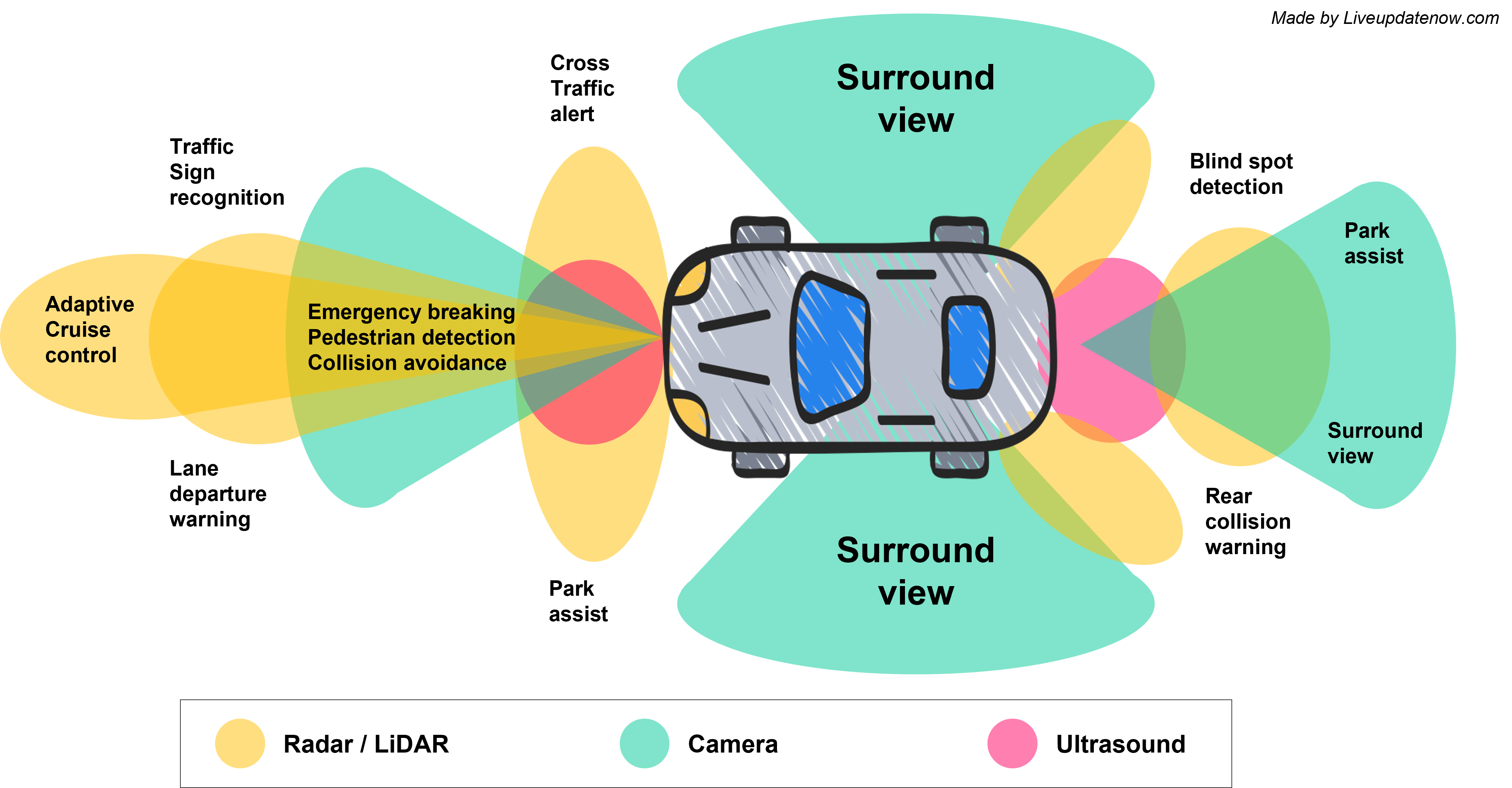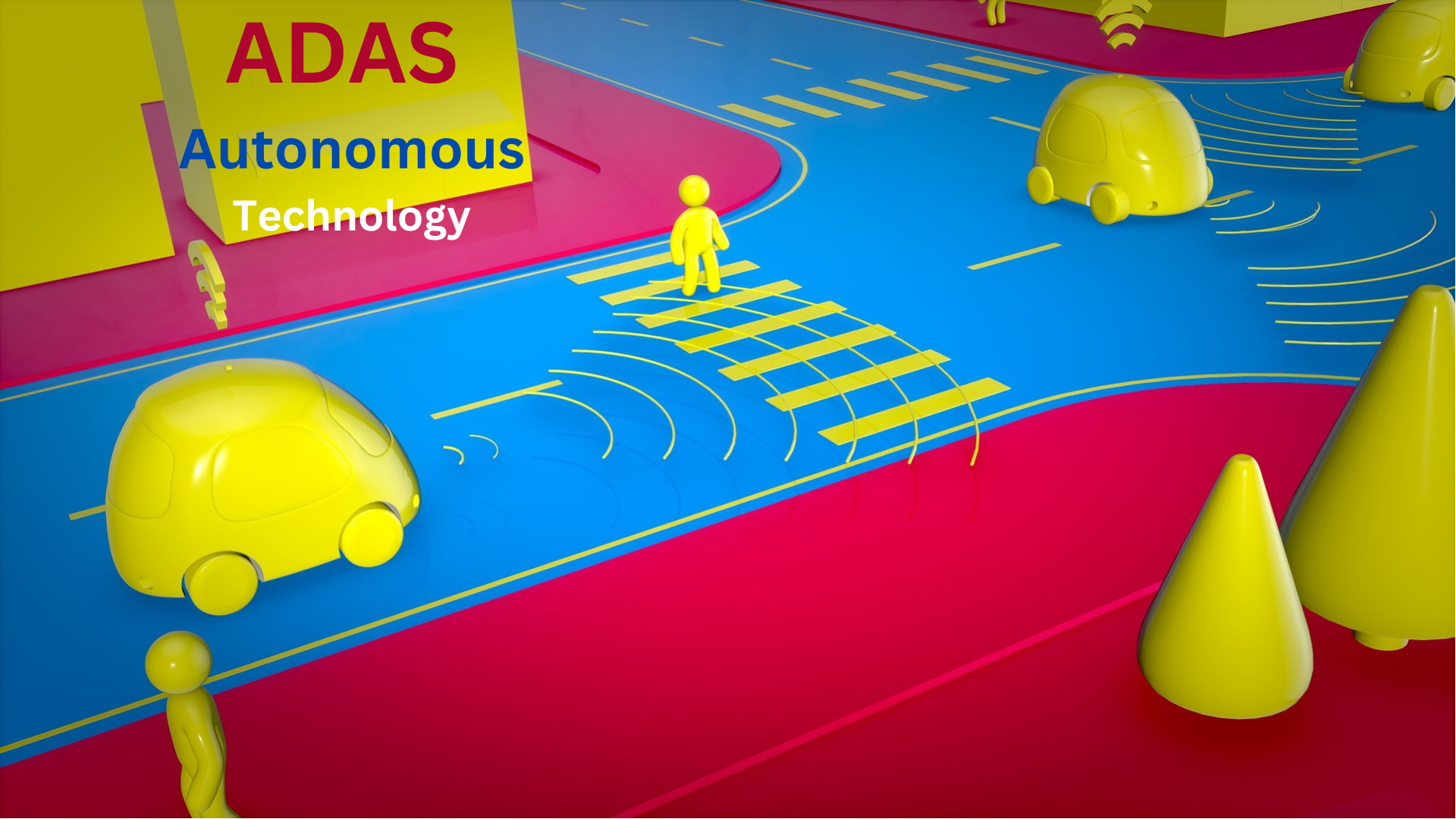The evolution of Advanced Driver Assistance Systems i.e., ADAS technology has marked a turning point in the automotive industry. This innovation is revolutionizing the way we drive, enhancing safety, convenience, and overall driving experience. From autonomous braking systems to adaptive cruise control, ADAS is redefining road safety and setting the stage for the future of driving.
These advanced systems utilize a combination of sensors, cameras, radar, and AI algorithms to provide real-time assistance to drivers, making driving safer and more efficient. From detecting potential collisions to assisting with parking, ADAS is transforming our vehicles into intelligent companions that anticipate and mitigate potential hazards. In this article, we will delve into the remarkable world of ADAS technology and explore its impact on the driving landscape.
The Major Components of ADAS
ADAS systems rely on an array of components to gather and process data from the vehicle’s surroundings. These include:
Cameras and sensors play a pivotal role in capturing visual and environmental data. They enable features such as lane-keeping assistance, pedestrian detection, and automatic emergency braking.
LiDAR (Light Detection and Ranging) employs lasers to create detailed 3D maps of the vehicle’s surroundings. It aids in creating a comprehensive understanding of the environment, essential for autonomous driving capabilities.
Radar systems identify objects and their distances by using radio waves. They play an important role in adaptive cruise control and blind-spot detection.
Ultrasonic sensors gauge proximity to objects and are commonly used in parking assistance systems. They help drivers navigate tight spaces and avoid collisions.
How ADAS Works
ADAS technology operates through a network of sensors and cameras that feed data to an onboard computer. This data is processed in real-time to execute various safety measures:

Collision Avoidance
ADAS-equipped vehicles can identify potential collisions and intervene by applying brakes or adjusting steering to prevent accidents.
Lane Departure Warning
If a vehicle drifts out of its lane without signaling, the system issues an alert, helping drivers maintain their intended path.
Adaptive Headlights
These headlights adjust their intensity and direction based on road conditions and the presence of other vehicles, enhancing visibility without blinding other drivers.
Traffic Sign Recognition
ADAS can recognize traffic signs and display them on the vehicle’s dashboard, helping drivers stay informed about speed limits, no-entry zones, and more.
The Benefits of ADAS
Improved Safety
Technology significantly reduces the risk of accidents by constantly monitoring the surroundings and reacting faster than human reflexes.
Enhanced Convenience
ADAS systems take the stress out of driving by assisting with tasks like parking and maintaining a safe distance from other vehicles.
Reduced Accidents
The implementation of features like automatic emergency braking and collision avoidance leads to fewer accidents and less severe collisions.
Better Traffic Management
With ADAS-equipped vehicles communicating with each other, traffic flow can be optimized, reducing congestion and minimizing travel time.
The Challenges and Limitations of ADAS
Weather Conditions
ADAS sensors can be affected by adverse weather conditions like heavy rain or fog, potentially compromising their accuracy.
Sensor Calibration
Accurate sensor calibration is essential for optimal performance. Incorrect calibration could lead to incorrect readings and potential accidents.
Cybersecurity Concerns
As vehicles become more connected, the risk of cyberattacks targeting ADAS systems increases, highlighting the need for robust cybersecurity measures.
ADAS and Autonomous Driving
ADAS technology serves as a stepping stone towards achieving fully autonomous vehicles. The insights and data gathered by these systems contribute to the development of self-driving technology.
Vehicle-to-Vehicle Communication
ADAS-equipped vehicles communicating with each other can enhance road safety by sharing real-time data and alerts about road conditions and potential hazards.
AI and Machine Learning Integration
The integration of AI and machine learning algorithms will enhance the capabilities of Advanced Driver Assistance Systems, making systems more adaptable and effective.
Conclusion
ADAS technology is revolutionizing the way we drive, offering a glimpse into a future where road accidents are minimized, and driving is more convenient and enjoyable. As these systems continue to evolve, the driving experience will transform, making our roads safer for everyone.
Please click here to know all about 5 different levels of ADAS system.
FAQs
Q1: How does ADAS technology improve road safety?
Improves road safety by using sensors and cameras to monitor surroundings, detect potential hazards, and react faster than human drivers.
Q2: Can ADAS-equipped vehicles prevent all accidents?
While ADAS can significantly reduce the risk of accidents, it might not prevent all accidents, especially those caused by unpredictable factors.
Q3: Are ADAS features available in all vehicles?
Features are becoming more common in modern vehicles, but the extent of their availability may vary by make and model.
Q4: What is the role of AI in ADAS technology?
AI plays a crucial role in processing data from sensors and cameras, making split-second decisions to enhance safety and driving efficiency.
Q5: Is ADAS technology expensive to maintain?
While initial costs might be higher, the long-term benefits of improved safety and reduced accidents can outweigh maintenance expenses.
Now, with this advanced ADAS technology, it is time to make the car interior beautiful with ambient lighting. Please check out our detailed post on installation of ambient car lighting.


I do not even know how I ended up here, but I thought this post was
great. I do not know who you are but definitely you are going to a famous blogger
if you aren’t already 😉 Cheers!
Appreciate for your time and feedback. Cheers!